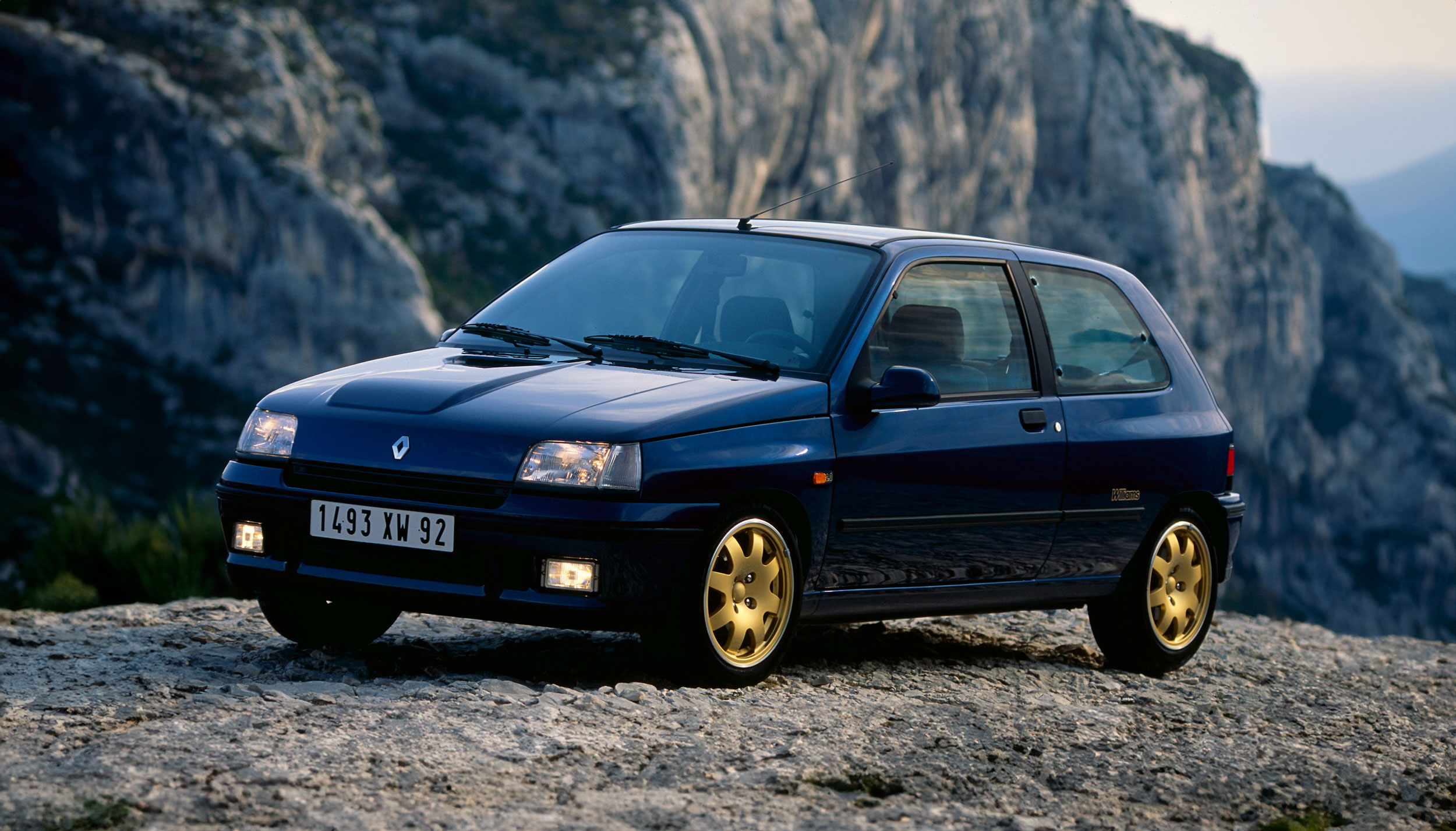We might just be nostalgic for our more youthful days, but there’s a lot to suggest that the 1990s was a killer decade for drivers’ cars. Here are 10 of the very best 1990s cars.
For many, the 1990s represents the start of the modern era. While many of the cars are still seen regularly on the roads today, it’s important to remember that these are now the up and coming classics, with the earliest already verging on their 35th anniversary. Perhaps it’s because they’re still very usable, look relatively modern and are simply too sensible, some find the term ‘classic’ doesn’t quite sit appropriately with these modern icons.
With increasing safety and emission regulations, not to mention spiralling insurance costs, cars of the 1990s had a much harder time raising the excitement stakes from the 1980s, but improving technology and an increasing grasp of turbocharging helped to level the playing field.
As values of the iconic 1970s and 1980s classic cars have moved out of reach for many, the next generation of up-and-coming classics have started to really gain traction. Our advice? Be quick! Most of these cars have already seen significant movement on the market, and will most likely continue to see further price rises in the next few years. Anyway, here are 10 of the decade’s greatest cars.
1) Alfa Romeo GTV 3.0 V6

Great engine, fantastic chassis and gorgeous looks, it’s no surprise that the GTV is highly coveted by Alfa Romeo fans. Although fundamentally reliable, they’re expensive to run, which means many were scrapped when values were low. Today, a good example can command up to £7500 (or more like £10,000 for the limited edition Cup model), although you can still pick up a bargain if you are prepared to spend some money on repairs. The 2.0-litre models are the best value, handle even better and are more sensible to run. But in the long run, it’s the glorious V6 that everybody wants…
2) Honda NSX

One of the best 1990s cars? Honda’s real-world supercar made an absolute mockery of the established players when it was launched in 1990. Here was a mid-engined, high-revving exotic – even having its own dedicated factory built in Japan – that offered a thrilling drive with usability and reliability.
While the NSX was never a huge seller in the UK, it has become increasingly desirable driving up prices to more than £60,000 for prime examples, with the later mk2 models commanding even more. Original UK cars rarely appear on the open market however, so getting an import is much easier. A lot of the time, these tend to be the less desirable models, often in automatic form, meaning these cars can still be picked up for less than £35k.
3) Renault Clio Williams

While 1980s hot hatches continue to climb in value, the choice of scintillating pocket rockets in the 1990s was somewhat slimmer. That’s why Clio Williams prices have been steadily rising. Once a popular choice for cheap track day toys (with a few turned into rally cars), numbers of good condition cars has thinned right out, making those survivors significantly more sought after. A 205 GTI for the 1990s? We’d say so! Although very little changed between the different generations of Williams, the limited run of Williams 1 models were the lightest, and are now the most valuable.
4) Nissan Skyline GT-R

Thanks to the rise in values in Japan, and increasing interest from around the world, a nice and (reasonably) unmodified GT-R will set you back at least £16,000 today. That’s still fantastic value compared with European rivals, but due to the number of cars ruined by bad modifications, you’ll pay a significant premium for any car that is vaguely standard. Tweaked cars (the engines can put out more than 400bhp with ease) can potentially still be picked up from around £8000, but tread with caution.
Alternatively, sitting between the motorsport-dominating R32 and high-tech R34, the slightly unloved R33 GT-R is seemingly the bargain GT-R. It’s a little bit bigger and heavier than the original, but is every bit the thoroughbred, and to some the best looking of the bunch. Search for one of the limited edition models, such as the V-spec or even 400R Nismo if you want the best.
5) Mazda MX-5
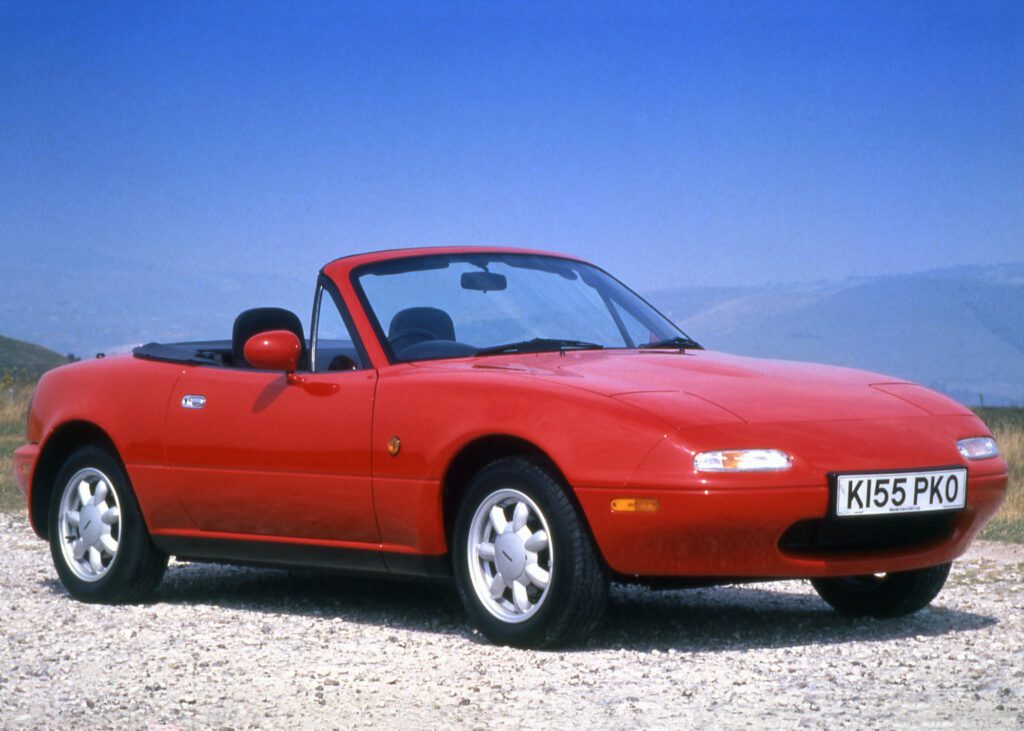
The original Mazda MX-5 was a real 1990s hero, although technically introduced in 1989. Here was a car that brought back the lightweight roadster concept by blending the charm and character of a British sports car with unburstable Japanese reliability. Powered by a sweet revvy 1.6-litre engine, as well as a slightly gruntier 1.8, this was one of the few small and fun rear-wheel drive cars that you could buy.
Its simplicity, nimble handling, and open-top design delivered an engaging driving experience – all traits that have all stood the test of time. Thankfully for enthusiasts, it remains a great value modern classic buy too. Just make sure you check for rust in all of the usual places…
6) Peugeot 106 Rallye
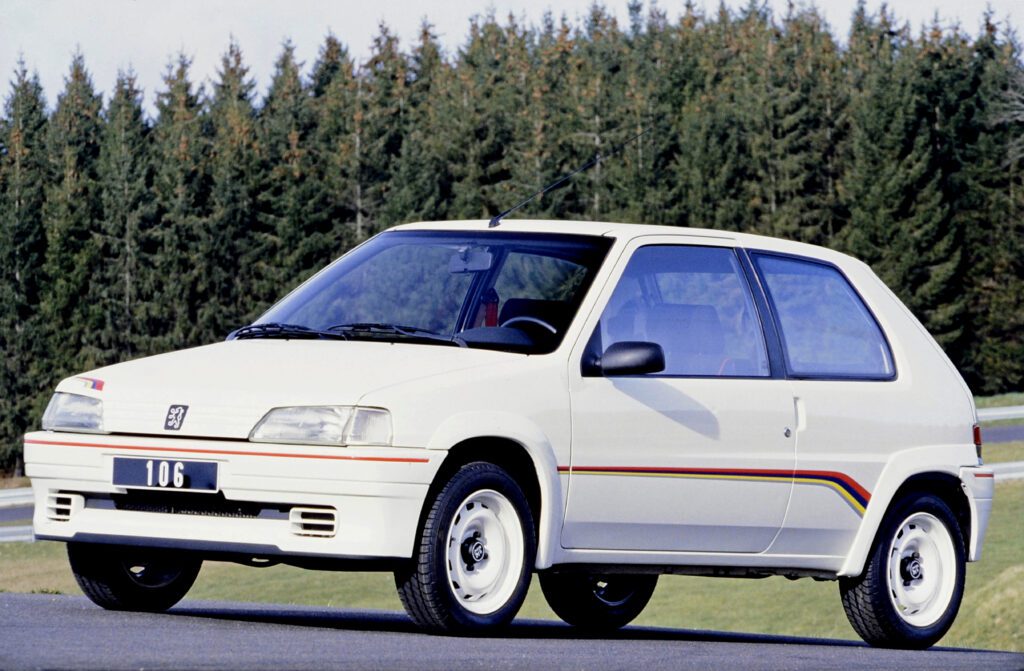
The Peugeot 106 Rallye, introduced in 1993, was an ultra-lightweight, no-frills hot hatch designed for motorsport use and driving enthusiasts. Initially powered by a high-revving 1.3-litre engine, it delivered an exhilarating driving experience thanks to its minimal weight and typically great French handling. In 1995, a more powerful 1.6-litre version was introduced along with the Series 2 106, offering increased slightly more performance, along with slightly more weight. It was still a raw, agile and fantastic driving machine.
If ever there was a car that proved ‘less is more’, the 106 Rallye was it. Doing without power steering, central locking, electric windows and even making do with a set of steel wheels, this is a car that is focused purely on driving dynamics.
7) Porsche 996
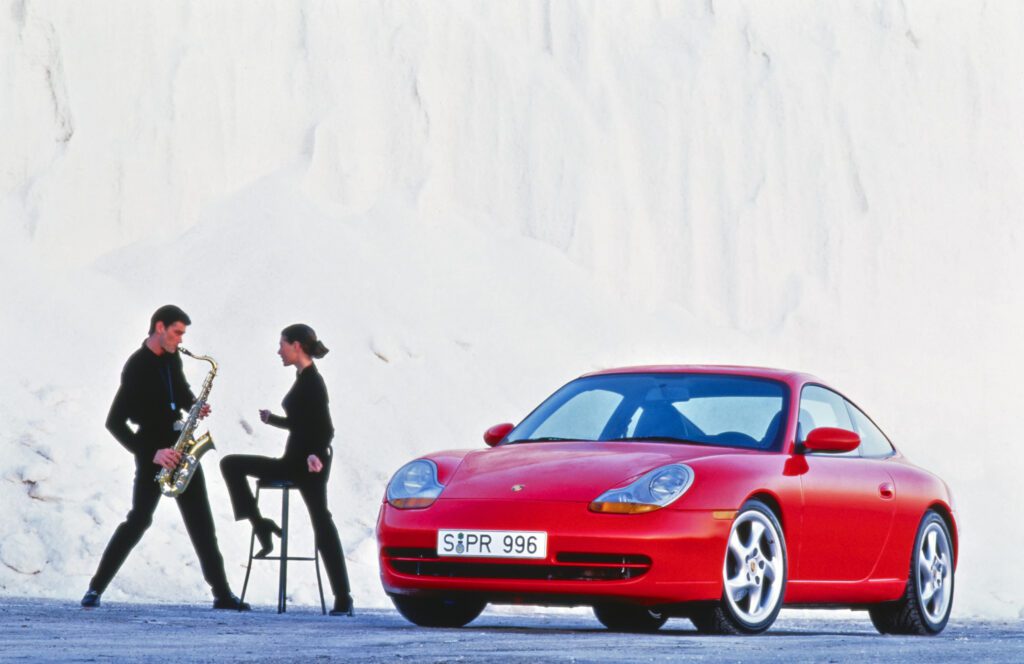
The Porsche 996 was launched in 1997, marking a significant departure from the brand’s classic aircooled flat-six 911 formula. Being the first 911 to feature a water-cooled engine was somewhat controversial among the purists, but it was a move that ultimately improved efficiency and performance but faced criticism from the purists. Developed alongside the Boxster, the 996 also introduced a completely redesigned body with a sleeker, more modern appearance. Thankfully, the 996 retained the rear-engine layout, delivering the thrilling driving experience that all 911s are renowned for.
The 996’s performance was impressive, from the base Carrera to the turbocharged 996 Turbo, not to mention the very special GT3 and GT3 RS models. Despite concerns about engine reliability, particularly the IMS bearing, the 996 still offers an accessible route into 911 ownership. Once considered the bargain basement model of the 911 range, it’s now more generally appreciated as one of Porsche’s landmark models and one of the best 1990s cars, full stop.
8) Lotus Elise
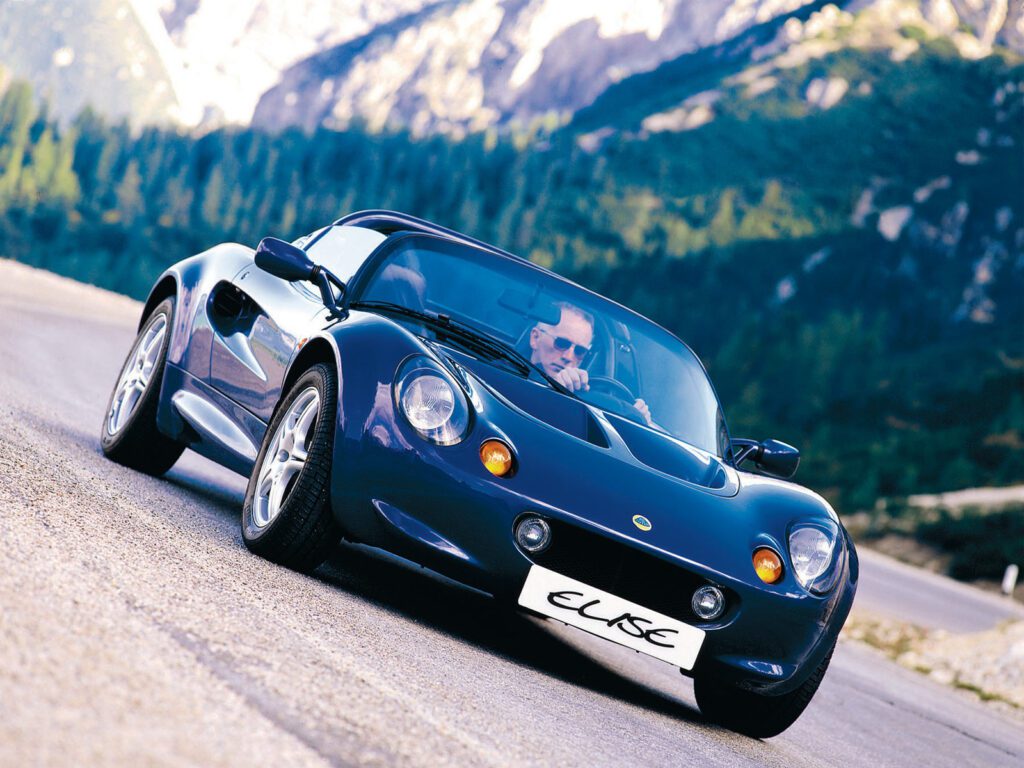
Born in 1996, the Lotus Elise embodied the lightweight sports car philosophy championed by Lotus founder Colin Chapman. The mid-engined, rear-wheel-drive layout was supremely balanced, and paired with a stiff aluminum chassis and curvy fibreglass body helped it to become one of the finest handling sportscars of all time. While most cars of this era suffered with bloat due to safety regulations and added airbags, the Elise prioritised driving purity. One of the all-time greats, but prices are still very attainable. Just make sure that you can get in and out, as it’s designed with sub-six-footers in mind.
9) Ford Puma
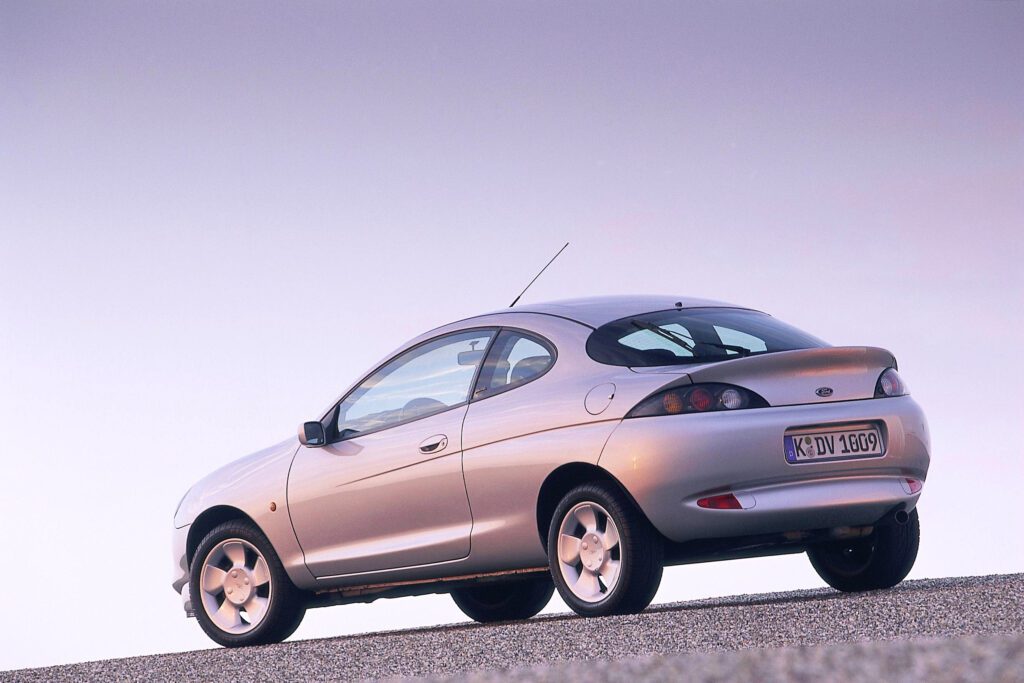
Launched in 1997, the Puma was built on the Ford Fiesta platform. Distinctive and eye-catching, the Puma’s real ace was the fact that its responsive engines combined with an absolutely cracking chassis to provide an engaging driving experience. Inside it featured a functional, driver-focused cabin, and it quickly became a favorite among enthusiasts seeking a fun, affordable, and practical hot hatch. Although spending years in the doldrums, it has become a real sought after modern classic.
10) Audi TT
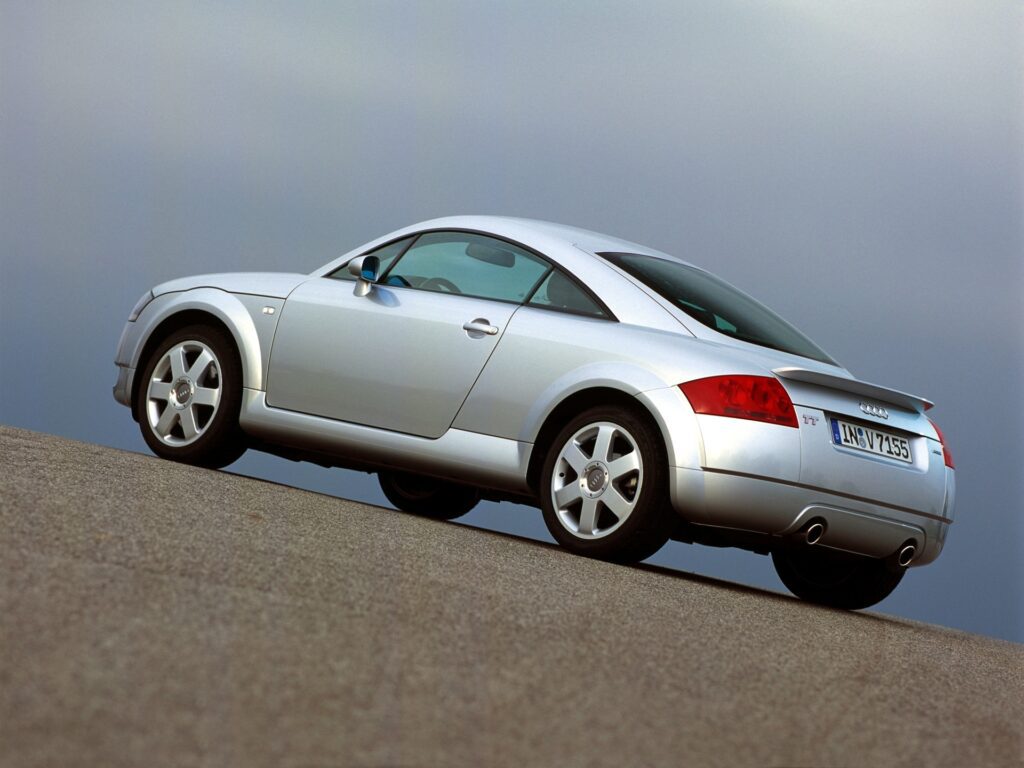
Okay, it was launched towards the end of the decade in 1998, but the Audi TT was such a landmark car that we had to include it as one of the best 1990s cars. Celebrated for its striking design, as well as some serious punch with its 1.8-litre turbo engine and Quattro four-wheel-drive. Featuring a distinctive, modern aesthetic with rounded, aerodynamic contours, the TT quickly became a design icon. Available in both coupe and roadster forms, a powerful V6 option was offered later in the model’s life.
The interior exudes a unique blend of luxury and sportiness, boasting high-quality materials and advanced technology. The TT delivers a balanced and driving experience, which was considerably better than the Mk4 VW Golf platform that it was based on. It was the combination of performance, style, and just enough practicality that broadened its appeal beyond traditional sports car enthusiasts.
